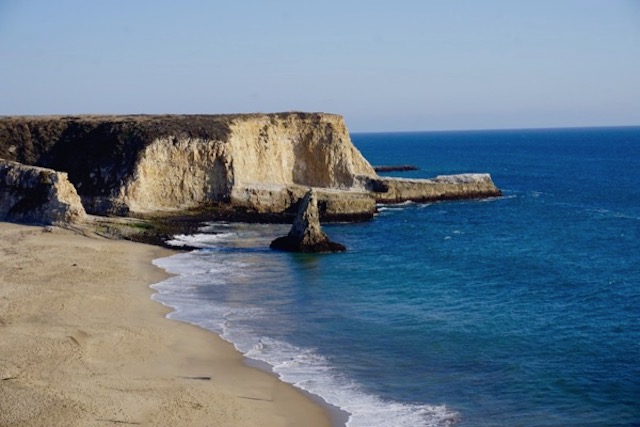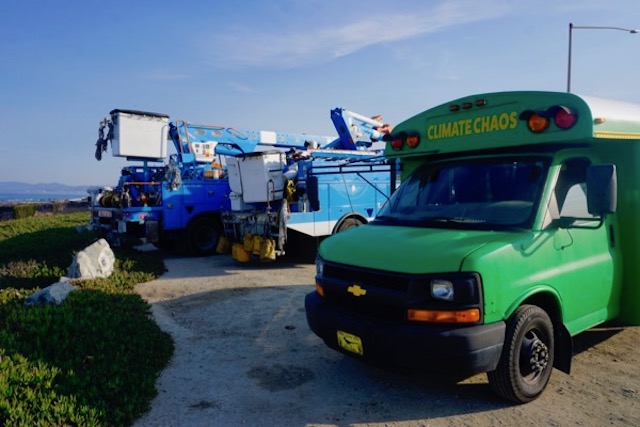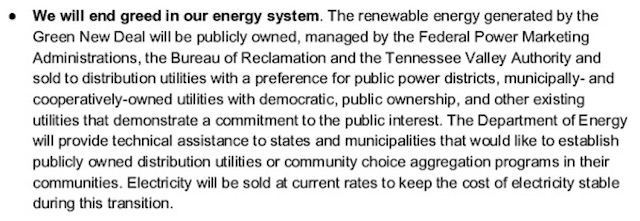Murphy’s Plan and Foundation Report Provide Cover For Failures and Dodge Key Issues
Wall Street Financed $500 Million Bond Program Provides Private Monopoly Profits
Why are infants and kids subject to weaker standards?
[Update: readers have accused me of being “soft”.
think you were soft – this a con – a plan to do plan with no teeth – more children will get lead poisoned – and nj future enj cwa gave cover for Murphy in action and negligence
I take that criticism but think it misrepresent most of my criticism below. I am not on the ground in NJ, I’m on the California coast. Here is the edge of the debate. ~~~ end update]
Just as we predicted at the outset and repeated 5 days ago, a private Foundation funded Panel released a flawed Report on lead in drinking water and Gov. Murphy immediately adopted the recommendations of that Report as his administration’s lead abatement plan.
That was quick!
And just as we predicted, the Report and the Gov. Plan dodge key issues (outlined below)(and the “transactional” frauds applauded right on que and even attended the Gov.’s event.)
But, contrary to our predictions, while the Report did provide cover for regulatory failures, it did not provide a “platform for privatization”.
In fact, the Gov. completely dodged the privatization issue by misleadingly calling private for profit water corporations “utilities”. Orwell lives.
Instead of allowing the private water companies to expand their profit empire by hostile takeovers of public systems, the private water companies were allowed to recover private monopoly profits on billions of dollars of public ratepayer backed investments.
That gravy train includes Wall Street bond finance fees and the lucrative legal fees for the law firms who serve as Bond Counsel.
Translation: what is being sold as a “no – cost to homeowners” program is really a $ billion pot of money to finance and recover a monopoly rate of return via special assessments on water bills. Here it is in the fine print of Gov. Murphy’s self congratulatory press release:
Financing
Governor Murphy proposes a $500 million bond to support the replacement of lead service lines and remediation of lead-based paint in homes across New Jersey. The Governor also supports efforts to allow water utilities to mitigate the cost of lead service line replacement for homeowners.
Translation: “mitigate costs” means recover monopoly profits on investment of your money. There is no free lunch. You will pay higher water bills. Period
Now to the details of the Foundation Report Gov. Murphy adopted as his plan’s framework.
In my set up post, I listed a bunch of issues I predicted the report would downplay or dodge completely.
1. The Whitewash starts in the first paragraph
Right off the bat, the whitewash begins in the first paragraph of the first page of the report, where they misleading provide a false assurance by stating as a fact (with no supporting evidence) that, aside from minor lead problems, that NJ drinking water is safe:
Most New Jersey residents take for granted that their tap water is healthy and safe. Federal and state regulations require drinking water utilities to test for nearly 100 primary contaminants and report the results annually; violations are unusual.
That misleading claim ignores over 500 “unregulated contaminants” that DEP knows are present in NJ drinking water but are not sampled for or regulated by DEP. It ignores DEP’s 2009 Report recommendation for a “treatment based approach” to regulation. It ignores the backlog of MCL recommendations at the DWQI and DEP. It ignores actual data on violations and notices of violations issued by DEP. It ignores the lack of followup DEP enforcement and corrective action Orders by DEP for violations. In fact, one of DEP’s many “Notices Of Violation” (NOV’s) to Newark for MCL violations actually contributed to the lead corrosion problem, because Newark altered the water chemistry in a failed attempt to comply with the DEP NOV.
2. No Sense of Urgency, no accountability and failed State leadership
I was pleasantly surprised by several of the recommendations on Executive Orders, legislation, regulation and monitoring.
The analysis and recommendations were far more detailed than I expected (they even took a bumbling stab at explaining statistics), but they were presented in such as way as to avoid criticism of the failure by regulators to tell the truth to the public about the various long known flaws and loopholes and failure by those regulators to seek stronger laws or enact stronger regulations.
In fact, instead of telling the truth, regulators have falsely assured the public that their water is safe, for decades.
First, In terms of urgency, the Report fails to note that NJ State agencies – like DEP and the Department of Health – have emergency rule-making powers. Rules become effective upon publication in the NJ Register.
That means that they could have corrected these long known regulatory flaws yesterday.
Second, the Report recommendations that critical public health policy and DEP regulations be addressed by DEP science and the Drinking Water Quality Institute (DWQI). That injects years of delay in implementation:
4. Research health-based thresholds and expanded blood testing. (research) Study expansion of required blood testing to include pregnant women and infants. Engage DEP’s Drinking Water Quality Institute to review national studies and consider the advisability of adopting: 1) a state standard for lead in water that is lower than the existing federal threshold of 15 parts per billion; 2) a health-based household action level for lead in water; and 3) an appropriate standard for child care facilities.
That recommendation also is a major failure to adopt the longstanding policy that NJ adopt more stringent NJ state standards, compared to federal EPA standards.
Here it is again:
Given the health issues at stake, DWQI should seek to expedite its recommendations, and DEP should decide whether to pursue regulations that are more stringent than the federal LCR.
That is failed leadership and echoes the “federal consistency” policy dictated by the business community and adopted by former Gov. Whitman and Christie via Executive Orders.
Third, the Report’s recommendations completely ignore major policy, science and regulatory controversies, including:
- a new “precautionary” public health approach to DEP regulation, MCL’s, and “risk assessment”, including cumulative impacts, multiple chemical exposures, and multiple exposure pathways
- Regulatory mandates to consider environmental justice in DEP policy, rules, and decisions
- Addressing over 500 “unregulated contaminants” in drinking water via what DEP has recommended as a “treatment based approach” (including new treatment requirements for drinking water plants AND wastewater discharges)
- Lack of resources and professional expertise & capacity at NJ DEP
- Inadequate oversight, negligence, and lax enforcement by NJ DEP
- what really went on in Newark? The NY Times provided more detail in news coverage and the Op-Ed page.
These flaws are what caused the Newark crisis and have blocked effective drinking water protections in NJ.
3. Massive Loophole Guts The Entire Program
The Report recommends a longstanding DEP loophole strategy: “flexibility” via the waiver:
DEP should have flexibility to negotiate alternative deadlines through a Safe Drinking Water Act permit or Administrative Consent Order if a utility demonstrates that the 10-year deadline is not achievable.
You can kiss that alleged mandate and 10 year deadline goodbye – they do not exist.
4. Reliance on Flawed Current Law – Water Quality Accountability Act and School Program
As I suggested, this Foundation funded and corporate influenced group was designed not only to provide cover, but to not make waves or step on any toes.
Accordingly, the Report supports and suggests only cosmetic reforms to 2 current state laws and programs that are fatally flawed: the Water Quality Accountability Act and the school & daycare lead program.
5. False claim that there are “no costs” to homeowners
The Report claims that the lead line removal program will come at “no cost” to homeowners.
That is false (see above quote from Gov. Murphy’s financing plan). That approach is reflected in the Report’s recommendation:
Rate revenues are the source of funds for approximately 95% of water and sewer utility expenses, including capital improvements. Rates are not typically used to improve water infrastructure relating to private property; however, given the public health threat of lead in water, other states (e.g., IN, PA, MI) have authorized rate recovery to remediate such LSLs. Recognizing the unique nature of this situation, legislation would authorize both investor- and publicly-owned drinking water utilities to pursue rate recovery to replace LSLs located under private property during the 10-year plan
Homeowners will be paying for this “rate recovery”.
I’m sure that this rate recovery recommendation was the price of getting the water companies to support the Report.
6. Misleading claims about fairness
The Report creates the appearance that equity is a core policy objective.
But the fine print belies that commitment:
For example, if the rate increase required to fully address the LSL problem in a community with lead exceedances and/or a significant percentage of LSLs exceeds a certain threshold (e.g., 5%), and if that rate increase would make water rates unaffordable for more than a certain percentage of the population, that community would be eligible for the subsidy.
Get that? A “certain percentage” of the community will bear an unjust and unquantified burden.
7. Crocodile tears for Democracy – A Trojan horse?
The Report – mistakenly – recommends and states as fact that any debt issuance would have to be approved by the voters.
Program structure.
Regardless of the funding source, voters would be asked to approve a constitutional amendment to ensure that the funds are not diverted.
This appears to be a faux appeal to democracy, but it is more likely a Trojan horse, because everyone knows that a lead abatement program, which, given the Newark crisis, will be politically spun as targeting NJ cities, is not going to be approved by the suburban voters.
This sense of faux Trojan Horse is bolstered by three facts:
One, the Report buries the fact that it is not really legally accurate – voter approval is NOT mandated:
If the borrowing were done through the New Jersey Water Bank (New Jersey’s State Revolving Fund), voter approval would not be required.
Second, no Constitutional amendment to prevent diversion of bond funds is necessary if financed by the NJ State Revolving Fund. The Official Statements on the Bonds, federal appropriation laws, and State pledges to bondholders legally would prevent diversion of funds.
Third, these people were nowhere to be found when the Legislature eliminated the prior requirement that any privatization be approved by local voters.
If they all are so committed to democracy and voters, they should have spoken up before our democratic rights were sold down the river by the Democratic Legislature’s privatization law.
8. Anti-regulatory ideology exposed
The Report calls regulation a “blunt instrument”.
This rhetoric could have come from the right wing Koch Brothers funded ALEC or The Federalist Society:
Rather than using regulation as a blunt instrument that treats all facilities the same, the State of Illinois applies regulatory pressure where it is needed most, varying testing requirements based on the compliance record of child care facilities.
9. The Report ignores Air emissions of lead, including from garbage incinerators
The Report identifies sources of lead exposure: lead paint, drinking water and “soil”.
While most of the lead in soil is from historical emissions from leaded gasoline, some of it is a result of contaminated toxic sites and industrial air emissions of lead, some of which is ongoing, like the garbage incinerators in over-burdened communities, Newark, Camden and Union County (se:
Garbage incinerators are major sources of greenhouse gas emissions, lead and other pollutants.
They should be targeted and shut down.
10. Why Do Schools and Day Care Centers Have Weaker Standards Than Water Systems?
I leave the best – or worst – in the Report for last.
The Report properly goes out of its way to stress that infants and children are highly vulnerable to low level exposures to lead.
But, the Report absurdly support the current school and daycare program, which has far weaker standards and requirements that the drinking water systems do, in terms of monitoring and remediation.
Why are infants and kids subject to weaker standards???
First, with respect to monitoring and reporting, schools are on a 3 year schedule. Water systems are required to do far more frequent sampling and reporting. Why should sampling and reporting be weaker at schools and daycares, where even short term low level exposures can seriously or even irreversibly harm an infant or child?
Second, with respect to remediation of lead problems that are discovered, schools are not required to remediate:
Neither state-licensed child care facilities nor schools in New Jersey are presently required to remediate lead in water. Facilities served by a water utility can simply close off access to the water outlets involved and substitute an alternative water source, such as bottled water. (Note: The federal LCR requires facilities that use well water to remediate.).
Instead of closing these egregious loopholes and mandating remediation, the Report recommends a lame “Drinking Water Management Plan” submission process.
Finally, the Report inadvertently reveals why the lead problem should not be imposed on schools. In the recommendations on how to prioritize current $100 million funds available, the Report notes:
Focus funds where they will have the greatest impact on public health. Recognizing that childhood lead poisoning is particularly acute in older municipalities, many of which are fiscally distressed, the funding distribution should prioritize those municipalities to ensure that the greatest number of lead-exposed students are protected.
In addition to “fiscal distress”, most of these communities are urban, racially segregated, over-burdened and disproportionately impacted by pollution (i.e. the environmental justice argument), and lack the resources and expertise to address the complex science and regulation of lead.
Instead of tackling these major issues head on, the Report spews drivel and euphemism.













